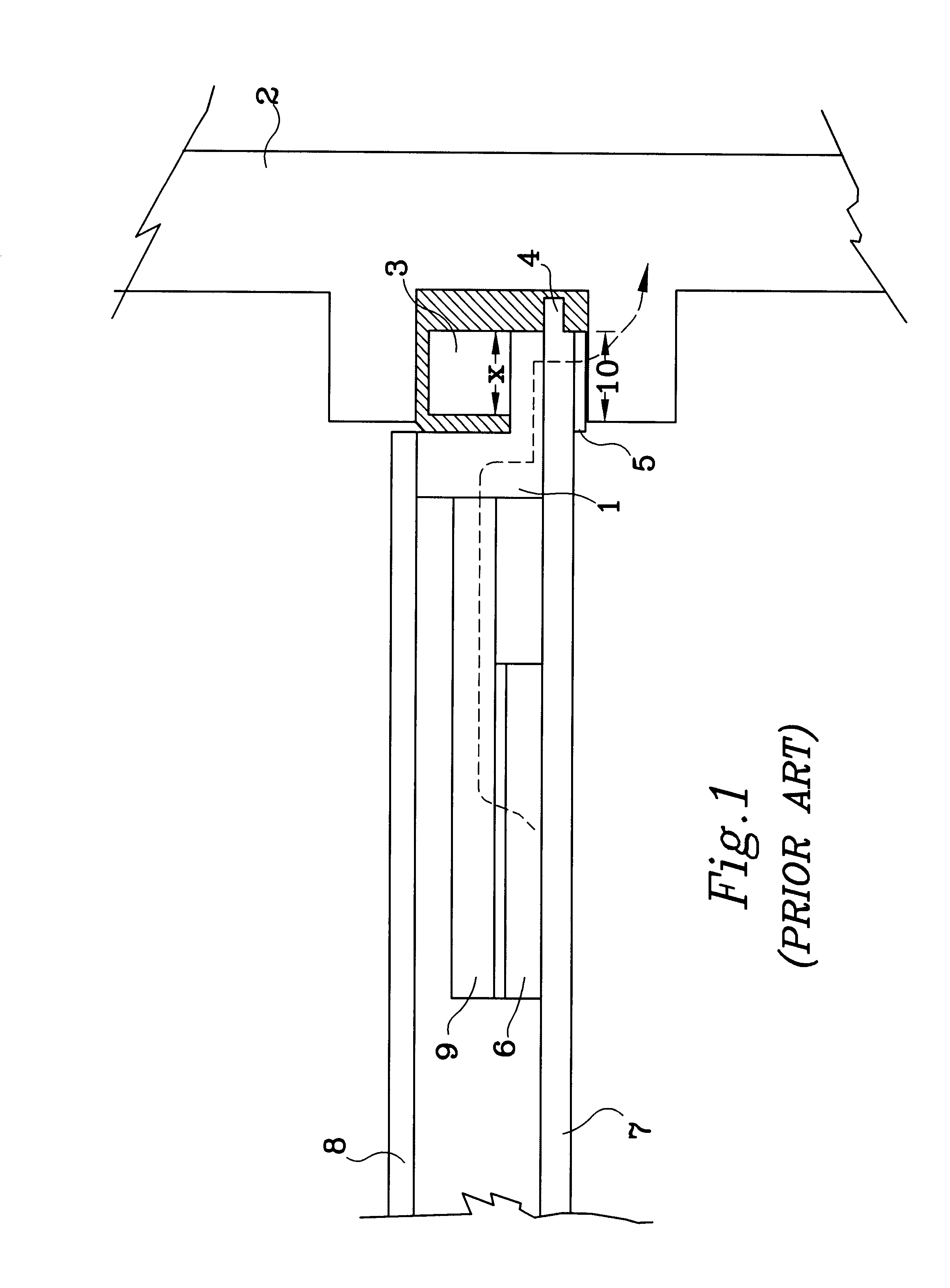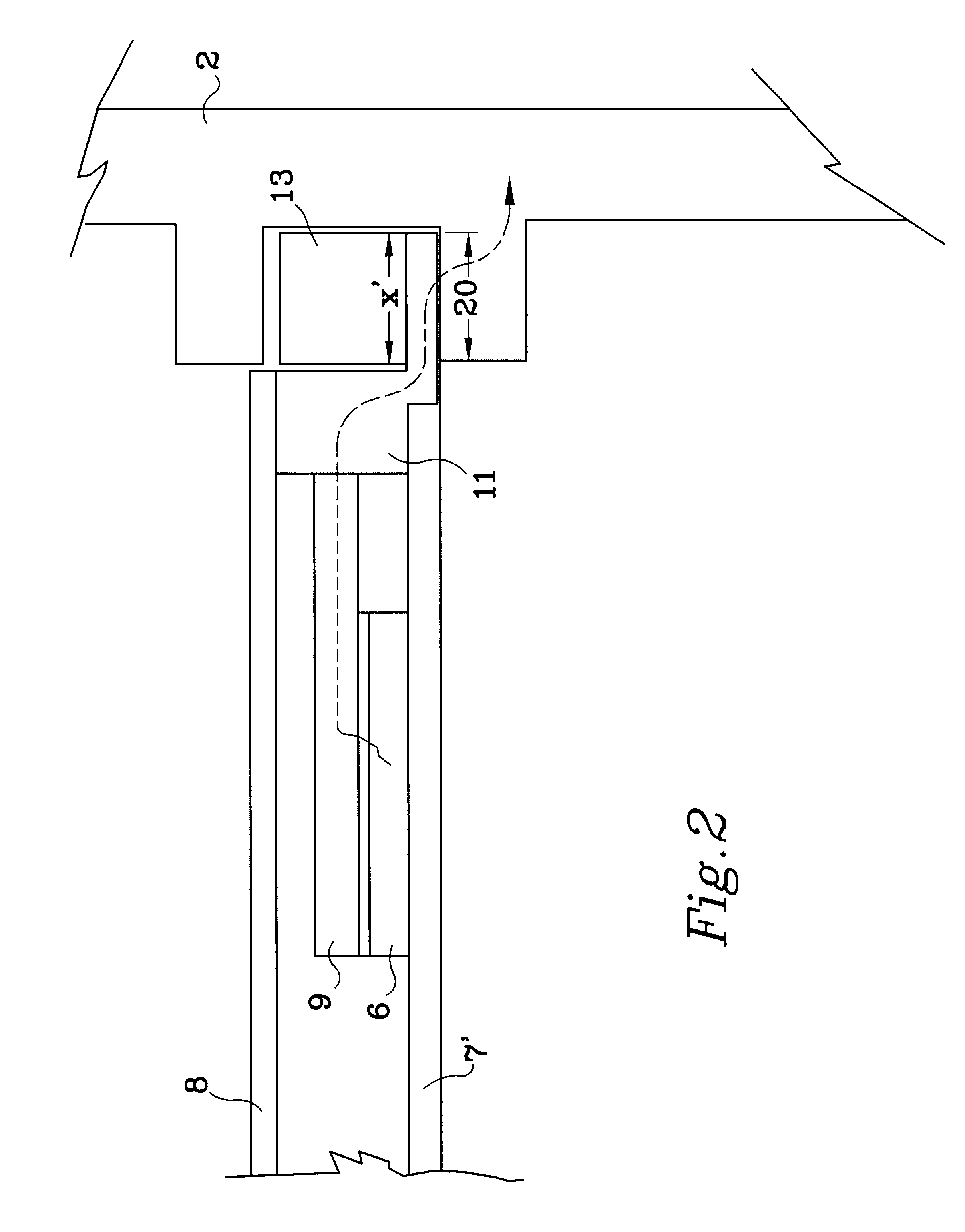Interchangeable stiffening frame with extended width wedgelock for use in a circuit card module
a circuit card module and wedgelock technology, applied in the field of computer card modules, can solve the problems of inability to meet the requirements of the circuit card module, etc., to achieve maximum efficiency in removing heat, increase clamping force, and increase cooling efficiency
- Summary
- Abstract
- Description
- Claims
- Application Information
AI Technical Summary
Benefits of technology
Problems solved by technology
Method used
Image
Examples
Embodiment Construction
Referring to FIG. 1, there is shown a cross-sectional view (top or side view) of a conventional circuit card module design installed in a conduction cooled chassis 2. The module of FIG. 1 comprises two circuit cards: a mezzanine card 8 and a base card 7 although the number and type of cards can vary. A plurality of electrical components 6 (e.g., integrated circuits, high-power die-up devices, etc.) are mounted (e.g., soldered, ball grid array, etc.) on circuit cards 7 and 8, although FIG. 1 illustrates component 6 mounted on card 7 only. Component 6 generates heat during its normal operation, and two thermal paths for heat removal are provided. The first thermal path is through the lower surface of component 6 to the end of circuit card 7 to chassis cold wall 2 via metal strip 5 (or shim). The metal strip 5 acts both as a heatsink and as protection for the card 7 against damage when it is inserted and removed from the chassis 2. The other thermal path for component 6 (shown by the d...
PUM
 Login to View More
Login to View More Abstract
Description
Claims
Application Information
 Login to View More
Login to View More - R&D
- Intellectual Property
- Life Sciences
- Materials
- Tech Scout
- Unparalleled Data Quality
- Higher Quality Content
- 60% Fewer Hallucinations
Browse by: Latest US Patents, China's latest patents, Technical Efficacy Thesaurus, Application Domain, Technology Topic, Popular Technical Reports.
© 2025 PatSnap. All rights reserved.Legal|Privacy policy|Modern Slavery Act Transparency Statement|Sitemap|About US| Contact US: help@patsnap.com



